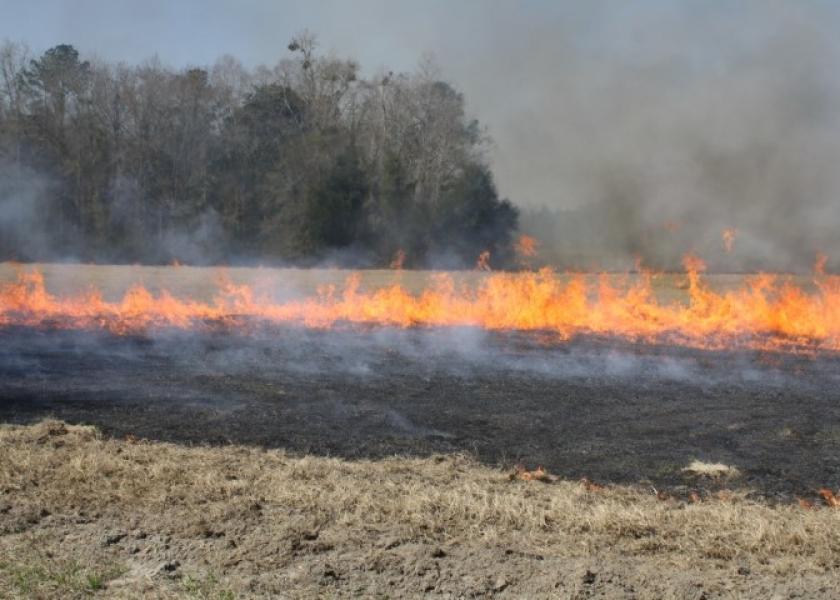Using Prescribed Fire for Managing Native Grass Forages

Prescribed burning is widely used to manage native grass pastures in the Great Plains and
Midwest.
By: Pat Keyser, Professor and Director, Center for Native Grasslands Management, University of Tennessee
Burning native grasses has a number of benefits but is not necessary for managing native grasses. Productive, vigorous native grass stands can persist for years without any fire at all.
One benefit of burning native grasses is that it can help suppress weeds. However, the amount of suppression depends on the weed species and the timing of burning. Earlier burns (March through early April) can be very effective at reducing encroaching cool-season weeds. That is because they are often actively growing at this time and the fire either kills them outright, in the case of annuals or seedlings of perennials, or suppresses them in the case of established perennials.
In the same way, later burns (mid-April into May) may set back the native grasses because they are actively growing at that time. However, these later fires, as well as those that occur toward the end of the growing season, can suppress woody species such as sweetgum seedlings or briars. If these woody stems are still small, they may be killed outright by these growing-season fires. Burning too early in the spring (before mid-March) can lead to encroachment of cool-season perennials such as tall fescue. This is because the fire releases whatever species are ready to grow once the field has been burned. By burning in early March, for instance, tall fescue will be ready to start growing but the natives are still weeks away from breaking dormancy.
On the other hand, any burn that occurs shortly before the natives break dormancy in early April will give them a competitive advantage. Burning also can help native grasses grow more quickly in the spring. This is because the blackened soil absorbs more solar radiation and is able to warm-up more quickly. Another advantage of burning native grasses is that a large amount of nitrogen and phosphorous is released into the soil. The burning mineralizes the elements boundup in the litter and duff from previous years’ growth. The effect is short-lived though.
Nevertheless, grasses that emerge following burning provide higher quality forage, at least for several weeks during the beginning of the growing season. In fact, studies have shown that cattle (and bison) selectively graze portions of pastures that have been burned within the same growing season.
If you do decide to burn native grasses, it is important to take care to select the correct firing technique. Normally, back-burning (into the wind) is preferred because it is safer and easier to control. Weather conditions must be acceptable with moderate winds and relative humidity. Both these factors exert strong influence over fire behavior. Be careful to have fire lines in place on every side of the field to be burned prior to your burn. If you are not experienced with burning, find someone to help you who is. There is no need to burn native grasses more often than once every two or three years.







